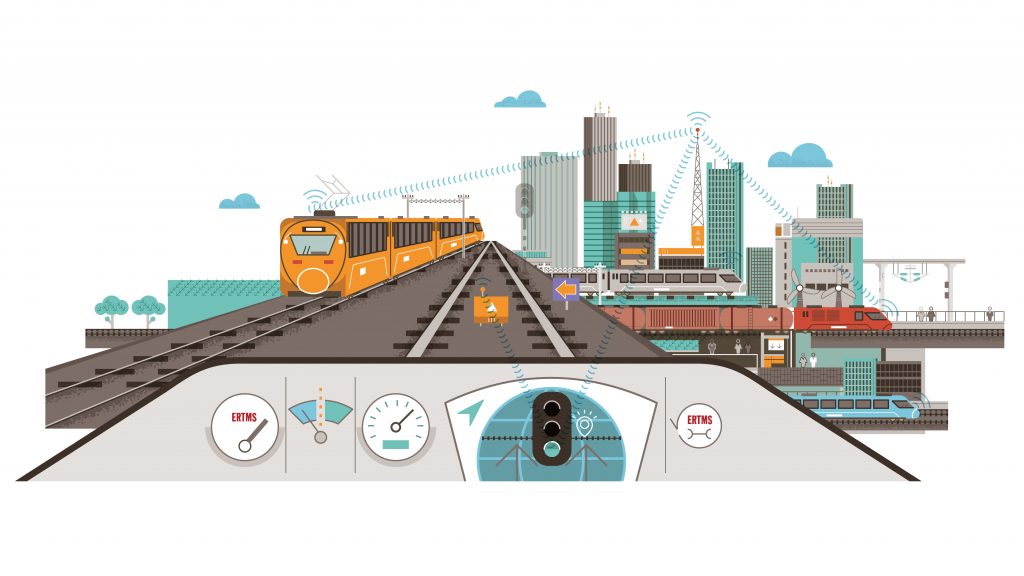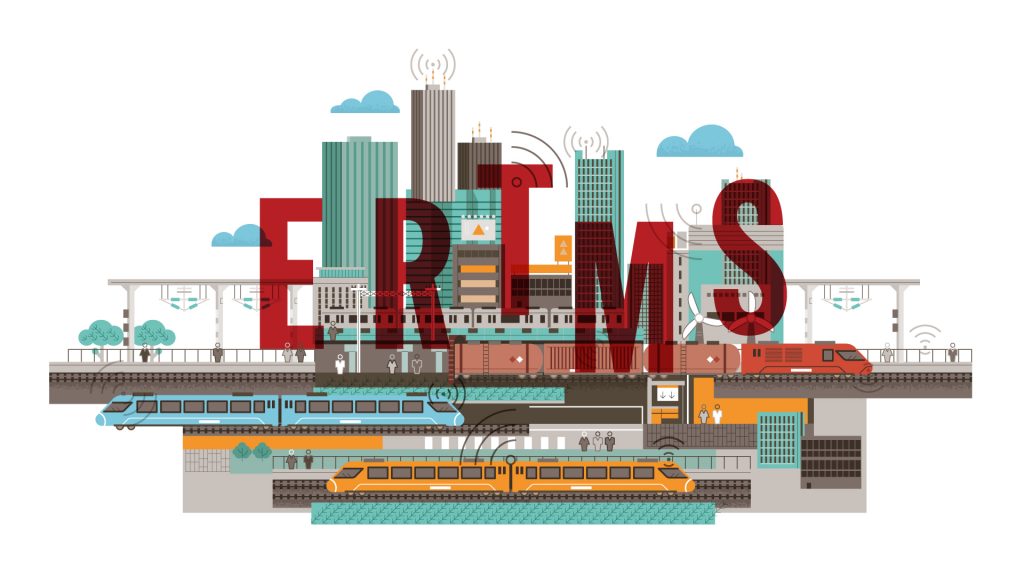ERTMS (European Rail Traffic Management System) is the European standard for the Automatic Train Protection (ATP) that allows an interoperable railway system in Europe. Furthermore, ERTMS is a major industrial project being implemented by Europe, a project whose aim is to make rail transport safer and more competitive.
As Chairman of the EIM Working Group “ERTMS”, you surely enjoy of a global view of the development of ERTMS in Europe. Where do we stand in ERTMS implementation today?
Overall ERTMS is being deployed and implemented pretty much everywhere in Europe. This is good news, even though the deployment is indeed slower than we would like it to be. This ‘delay’ is, in a way, pretty logical because it does take time to learn how to work with ERTMS. The ways of working regarding ERTMS operations, procurement, technology implementation and management, development projects and life-cycle management are fundamentally different than with legacy systems. Despite this, everybody is excited and enthusiastic about ERTMS. There is no more doubt today that ERTMS is -and should be- the single train control system that needs to be implemented in Europe.
You mentioned some fundamental differences between the way of working with ERTMS and legacy systems. What are then the challenges that rail infrastructure managers need to face to ensure a successful ERTMS implementation?
The railway world is complex. Rail infrastructure managers and the various railway undertakings face national and international issues: everybody has to learn how to work with ERTMS.
ERTMS is a modern IT-based system which means that there will be regular updates because the technology evolves fast. That is new to the railway business, or at least in the signalling business. We need to adapt to it to be able to implement this rapidly evolving technology in our business. There is something we need to learn: how are we going to implement this rapidly evolving technology in our business.
In my view, our business is still too focused on managing equipment. But with ERTMS, we are not managing equipment, we rather manage functionalities and IT. Equipment only comes after. For example, if you buy a new smartphone after having properly set up the settings of the previous smartphone, your new phone is ready to use with all your data and with new possibilities. We haven’t achieved this level in the rail signalling business yet. We still need to learn how to manage the data, rapidly change the technology while maintaining the underlying functionality.
In the R&I field, soon the new Joint Undertaking “Europe’s Rail” will become operational. The good news is that it will pay particular attention to the development of interoperable control & command signalling systems with a dedicated “System pillar”. How do you see the contribution of the rail infrastructure managers to this new opportunity of ERTMS innovation that we expect from “Europe’s Rail”?
I hope that the System Pillar of the new Joint Undertaking will help the railway sector to work with new technology by, for example, much more thinking in terms of data modelling.
It also means that infrastructure managers should help the Joint Undertaking to deliver, be part of it and work together in this framework. Otherwise, it won’t work. If you create an organisation disconnected from real life and the field, it may come up with great ideas and solutions, but these will not be accepted in the field. We all have to work together. Of course, that is a challenge because there are in Europe a lot of different partners and it is impossible to seat all together around a big table.
However, if I think about cooperation among rail stakeholders, over the past years we have learned to cooperate successfully between sectoral organisations and institutions like EIM and CER, the ERA or the Commission and it works quite well. If all the partners have sufficient capacity to work on specific subjects, then with the proper exchanges, debates and discussions it is possible to achieve good results.
If we look 10 or 15 years back when ERA was created, a lot has been achieved. And it keeps going better and better. If you take the last few years, for instance, all the TSIs were at first managed independently creating gaps between them. Now the way of working has changed and the Agency is trying to manage and synchronise all the TSIs together. That’s already an achievement!
Not everything is perfect, far from it, but interoperability issues are improving, and we should learn from experience. Therefore, with the new Joint Undertaking we should start by looking at what works, what should be improved in the sector but not start from scratch again.
You have mentioned some challenges and opportunities under the new Europe’s Rail Joint Undertaking, how do you see the EIM contribution in this framework?
As not all infrastructure managers can be at the table in the Europe’s Rail System Pillar, EIM must be kept involved in the activities of the System Pillar. It should be the representative organisation that brings together the input from the infrastructure managers, the forum where they can discuss the direction they want the System Pillar to take. EIM has indeed an essential role to play!
EIM has always been, and must continue to be, such a platform. We see it, for example, in the domain of the development of the TSIs in general and CCS issues in particular, and with results: good discussions with the ERA, good cooperation with the Commission resulting in improved legislation and standards. Let’s keep up the good work!



